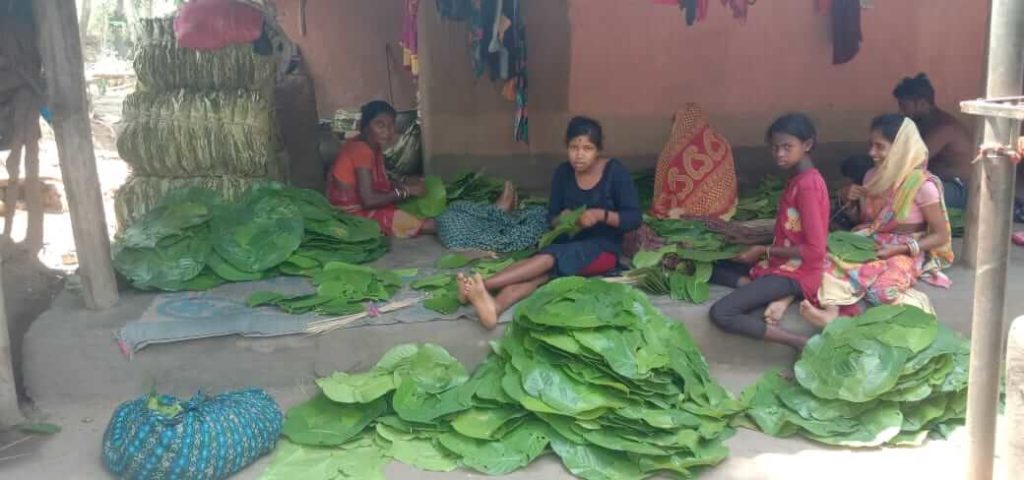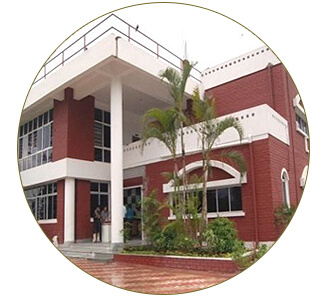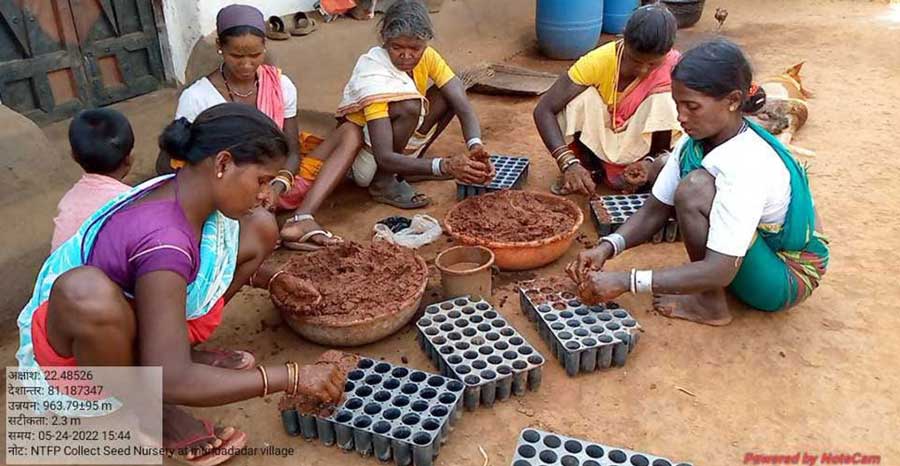Climate Resilient Livelihood
Rural livelihoods primarily depend on natural resource-based activities focusing on agriculture and allied activities. These activities are mostly climate-dependent and face climate change’s brunt as they are more vulnerable to climate-induced uncertainties, risks, and shocks. The smallholder farmers, particularly the tribal/indigenous communities, are the worst sufferers. They have the least options to widen livelihood opportunities to cope with the impacts of changing climate and extreme weather events. Consequently, the food, nutrition and income security of these marginalised, impoverished and malnourished communities are threatened further. Therefore, it is urgently required to design climate-resilient sustainable livelihood to ensure food and income security of the rural community in general and smallholder tribal population in particular.
Resilience is defined as “the ability of groups or communities to cope with external stresses and disturbances resulting from social, political and environmental change” (Adger 2000). Climate-resilient livelihood mentions the ability of people to withstand, adapt to, and recover climate-induced stress and risks and sustain and improve their livelihood opportunities.
IBRAD (Indian Institute of Bio Social Research and Development), a Centre of Excellence under the Ministry of Tribal Affairs, Government of India, has initiated the process of developing and strengthening the climate-resilient livelihood of the smallholder tribal/indigenous communities, particularly the PVTGs (Particularly Vulnerable Tribal Groups) in the states of Chhattisgarh, Odisha and West Bengal. It has adopted a two-pronged strategy for climate-resilient livelihood development:
- Restoration of the degraded ecosystems of the mosaic landscape of the community to prevent, halt and reverse the process of degradation, restore the ecosystems for sustainable flow of ecosystem services and
- Capacity building of the stakeholders through training and developing social networks by forming Common Interest Groups of like-minded people, introducing climate-resilient low emission technologies and climate-smart agronomic and agro-pastoral practices, water management, biodiversity conservation by adopting the principles of ecosystem functioning and human well-being.
The program aims to develop the community’s adaptive capacity to overcome climate-induced disturbances and shocks, sustain and improve their livelihood opportunities.
Institutional innovations: Formation of Common Interest Groups
Institutional innovations are made at the community level by forming Common Interest Groups (CIG) of like-minded people for undertaking different activities. This helps create stake and scale up the production as well.
The resilience of the community to climate shocks is developed based on the diversification of income sources integrating cross-cutting themes including sustainable water management, organic food production, and biodiversity conservation known as NAVRATNA as follows:
Establishment of organic nutrition gardens for production of low energy input based safe food
Established nutrition gardens in the homestead land to produce organic food without chemical fertilisers and pesticides. The seeds are treated organically, organic manures and biopesticides are used. The entire process promotes sustainable, low emission production practices. More than 200 such nutrition gardens are established by the PVTGs covering three states, Odisha, Chhattisgarh, West Bengal and Jharkhand.
Food is consumed, and people have started selling the surplus in the market. It helps in the diversification of livelihood options. It also promotes women empowerment through engagement in the production value chain.
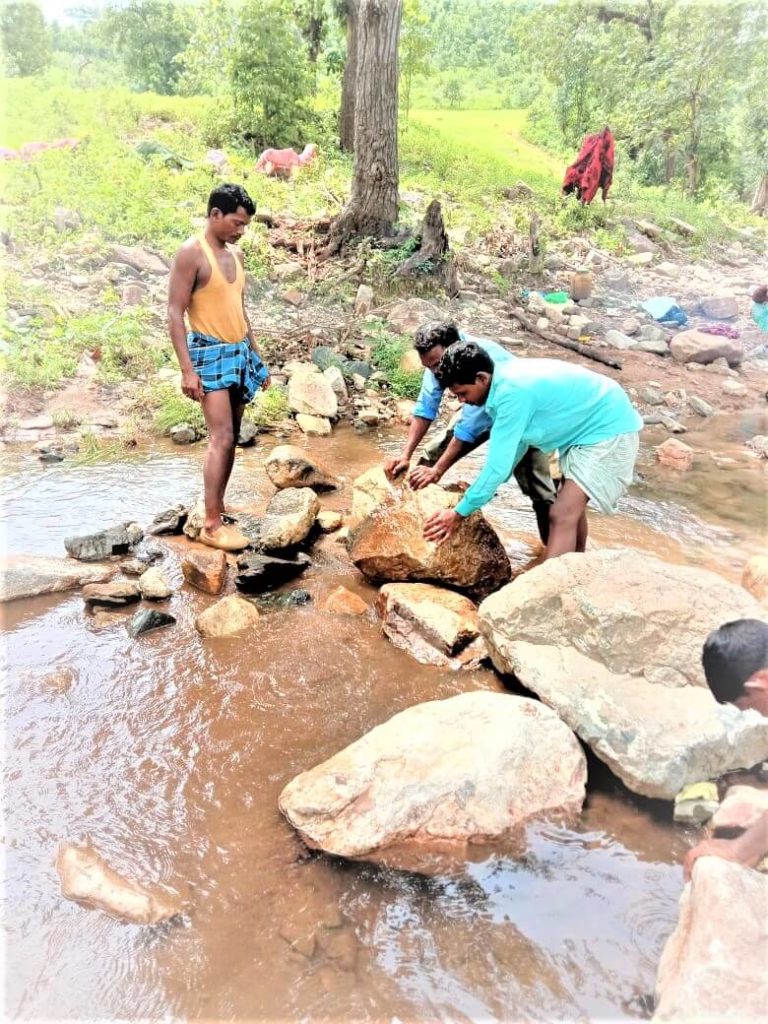
Water conservation and sustainable use of water
The smallholder PVTG farmers mainly depend upon rainfed farming. The loss of vegetation due to degradation of the forest has induced high water runoff, topsoil erosion and depletion of groundwater and soil moisture content. Due to climate change, the erratic rainfall pattern has worsened the condition and increased the risk of crop loss and low yield.
Loose boulder check dams for conservation of surface water
Community is organised to form groups and conserve surface water using technologically feasible, cost-effective and easily replicable methods. Locally available materials and skills are used to prepare loose boulder check dams across the streams flowing beside the villages. It is helping in improving soil moisture content, recharging groundwater and using the water for irrigation that results in the introduction of new crops in the rabi/winter season.
Rainwater harvesting – Panchgadiya
Another innovative practice is introduced to conserve rainwater by digging a 10 to 15 ft long, five ft wide, and 5 ft deep ditch, locally known as Gadiya in Odiya language, at the individual land. It is then covered with a plastic sheet to store water during the rainy season. The water is then used for five activities irrigating the kitchen garden, home herbal garden, plantation of fruit crops, nursery irrigation and pisciculture.
Micro water management through conservation of wastewater
The wastewater around the taps is stored, particularly by involving the women by digging a ditch and covering it with the plastic sheet. The water is then used for irrigating the kitchen garden.
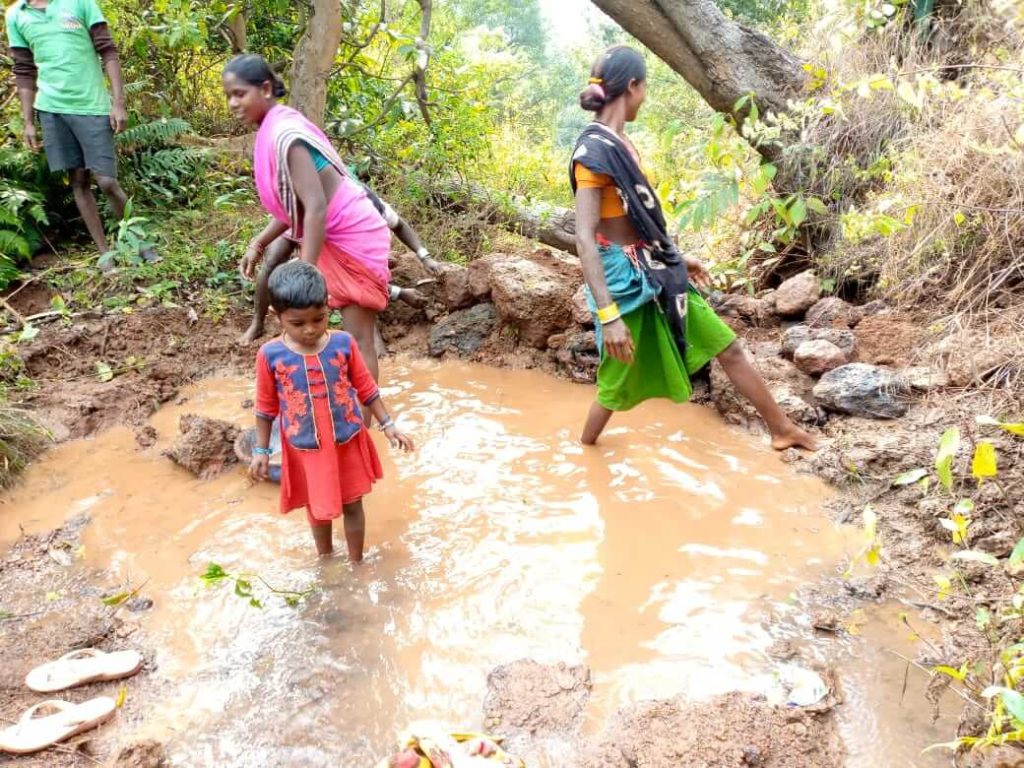
Introduction of Fishery
The panchgadiya is used for the cultivation of quick-growing fish.
Common Interest Groups are formed to initiate fishery in the unused ponds of the villages. This also promotes diversification of livelihood and income sources.
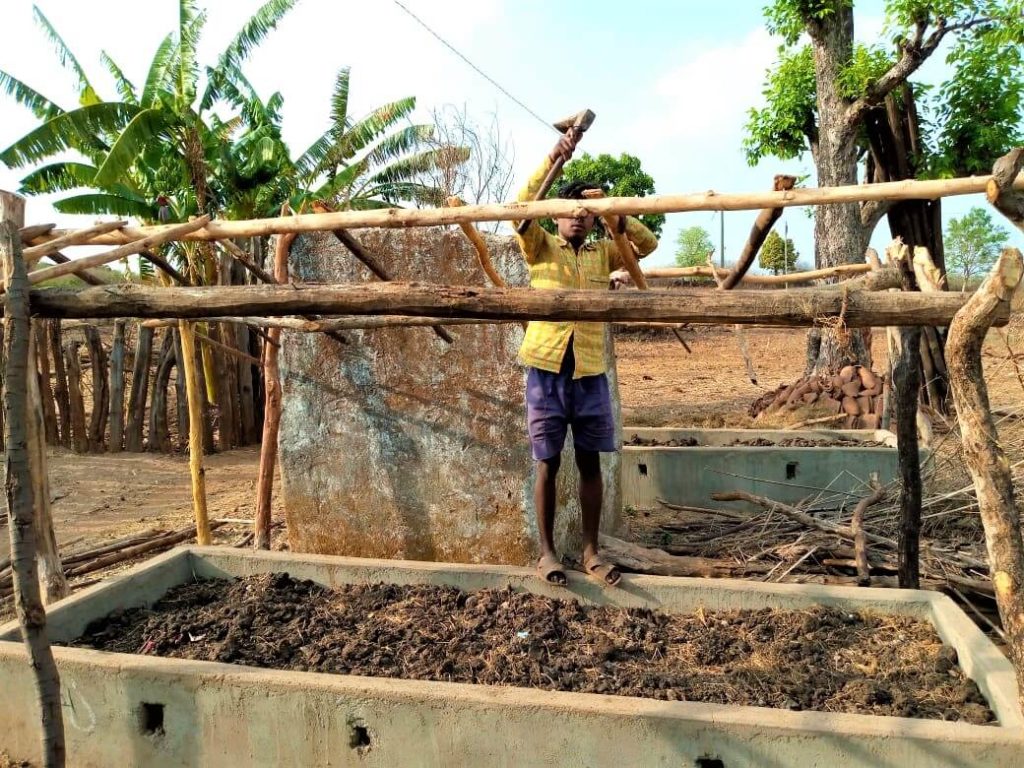
Production of vermicompost
To make the people self-sufficient for producing organic inputs for agriculture and horticulture crops, CIGs are formed to produce vermicompost. It helps reduce the cost of production, requires less water, and produces safe food. Besides, it also opens up a new livelihood opportunity for the community through the sale of vermicompost.
Identification of Rare Plants and conservation through herbal gardens
Community capacity is built to identify the medicinal plants, their threat status at the local level and establishment of the herbal garden for their conservation. Through PRA exercises, the medicinal plants available in the area but are getting extinct or rare are identified. A reconnaissance survey was conducted with traditional healers and elderly villagers in the forest areas. Their threat status is determined, and their uses to treat different diseases and the formulations are also documented.
The Baiga and Lodha PVTGs of Ghoghra, Mundadar and Nedam villages have started digitally documenting the medicinal plants available in their forest, their threat status and uses of the plants for treating the ailments. All these are documented in the form of short video clips.
Herbal Gardens are established by planting the locally rare and endangered plants at Nedam, Ghoghra and Mundadadar villages at the community level. Besides, small scale home herbal gardens are also established at the individual homestead area.
This promotes the conservation of biodiversity, an essential strategy for climate change adaptation and opens up the opportunity for a new livelihood for the people by linking them with the large market of medicinal plants.
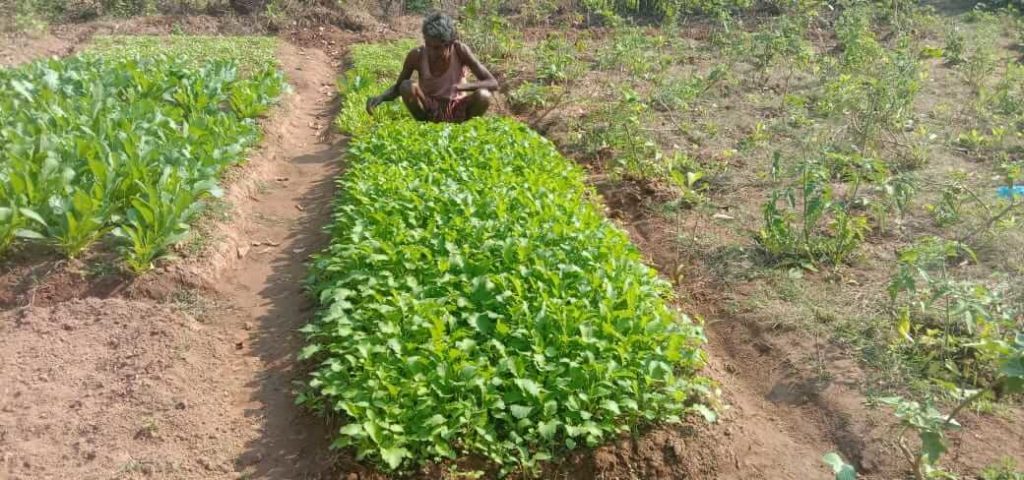
Changing land-use practices with suitable crops and community seed banks for conservation of indigenous crops and cultivars
Land use practices are changing from mono cropped agriculture to double cropping practices by introducing suitable crops and adopting climate-resilient agronomic practices based on organic farming in the Rabi/Winter season.
Crops like mustard and chana (gram) grow with the residual moisture, and minimum water requirements are introduced. It also improves soil fertility.
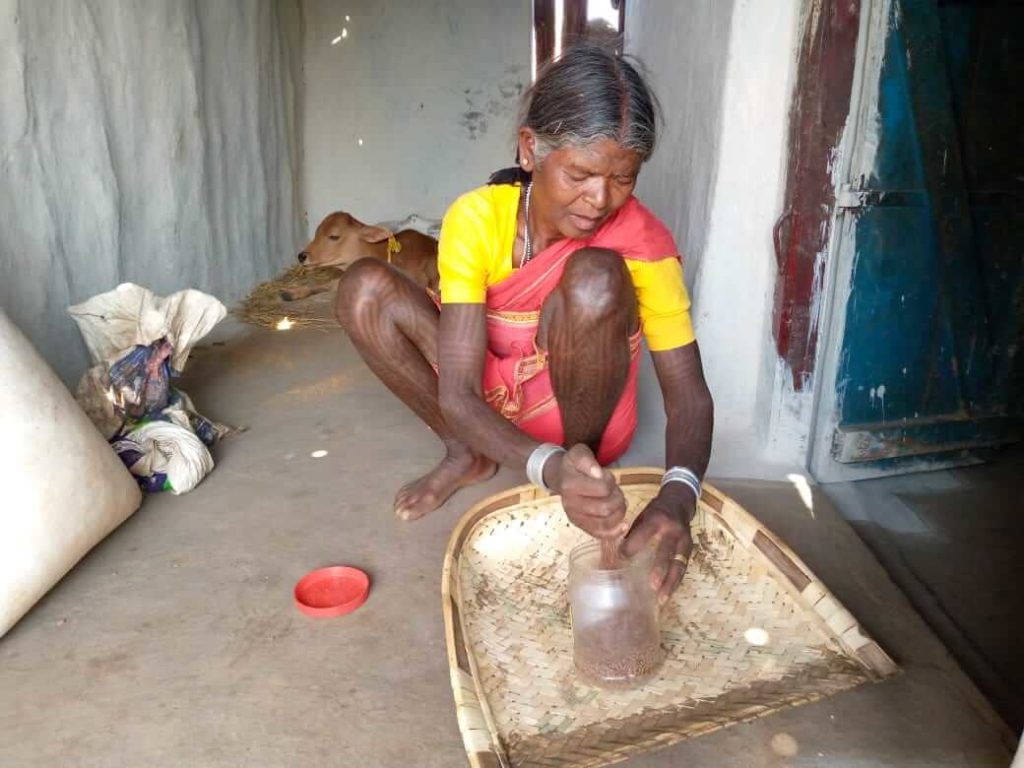
Community Seed banks for conservation of indigenous seeds that are more climate-resilient, rich in nutrient content and can ensure food and nutrition security
Tribal landscapes harbour endemic plants and cultivars, millets, pseudocereals, lentils, etc., climate-resilient, pest resistant and nutrient-rich. These crops are generally grown in natural conditions without external inputs like irrigation, fertilisers and pesticides. But due to various forces, such crops are becoming rare nowadays, and people are converting to cereal-based foods supplied through the subsidised PDS facilities.
People are organised to conserve the indigenous seeds, landraces and cultivars, including highly nutritious millets, tubers, cereals and other crops that are becoming rare or on the verge of extinction. These crops are tolerant to extreme climate, pest and disease resistant and can grow with less water and other inputs. These crops have great potential for ensuring food security in the context of climate change.
PVTG women are taking the lead to identify and conserve the indigenous seeds.
Capacity building improves the agronomic practices of cultivating indigenous crops and their yield and productivity.
Silvi Pasture development
Sustainable agriculture practices cannot be achieved without the good health of the livestock. Cow dung and cow urine are essential components for biofertilisers, biopesticides, and plant growth promoters. Small ruminants also constitute an essential livelihood option for the tribal population. The tribals cannot afford stall feeding, and access to the forest for grazing is also limited. Hence, silvi pasture land development is essential to ensure the supply of regular and quality fodder.
The capacity of the community is built to develop pasture in the fallow land available in the village for livestock fodder. It is also helping in restoring the degraded fallow land, checking soil erosion, and increasing moisture content.
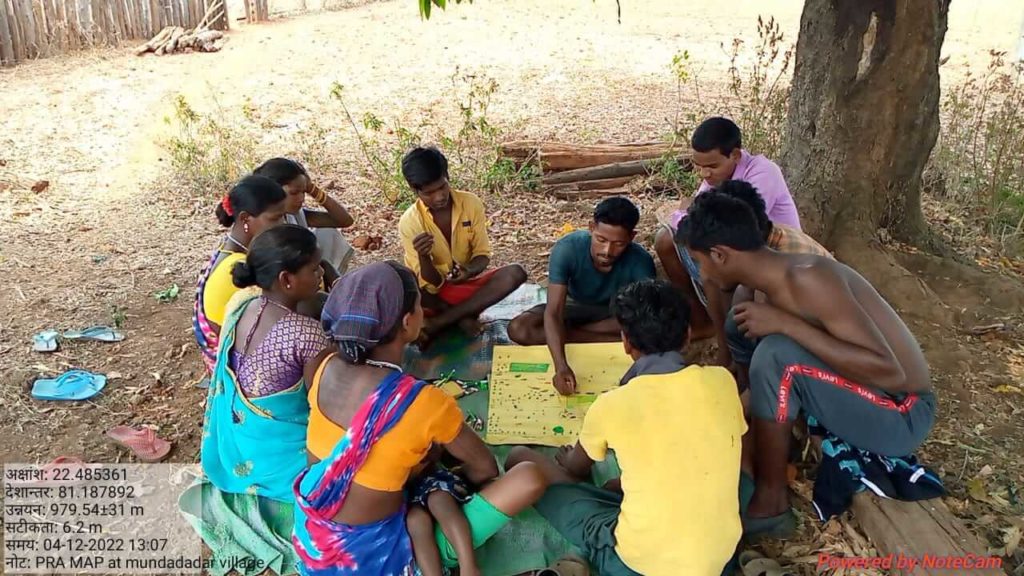
Plantation of fruit trees
Fruits are good sources of nutrition for smallholder farmers. It also helps diversify livelihood sell the surplus off in the market.
It also improves vegetation status and helps mitigate climate change through carbon sequestration.
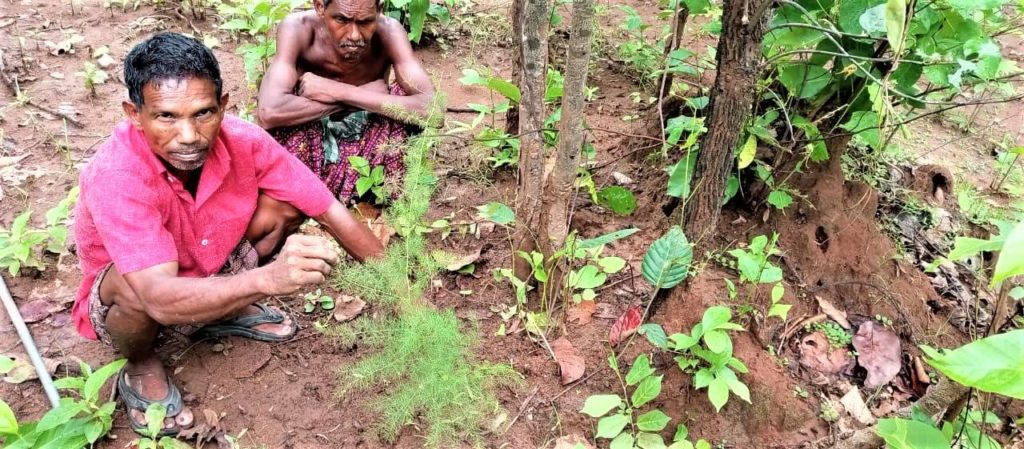
Nursery raising
The community is organised to establish small community nurseries to produce quality planting materials. This again makes people self-reliant to produce quality planting materials for plantation at the household and community level and help in carbon sequestration. This action helps in mitigating the climate change impact. Moreover, people also develop the scope for alternative livelihood options.
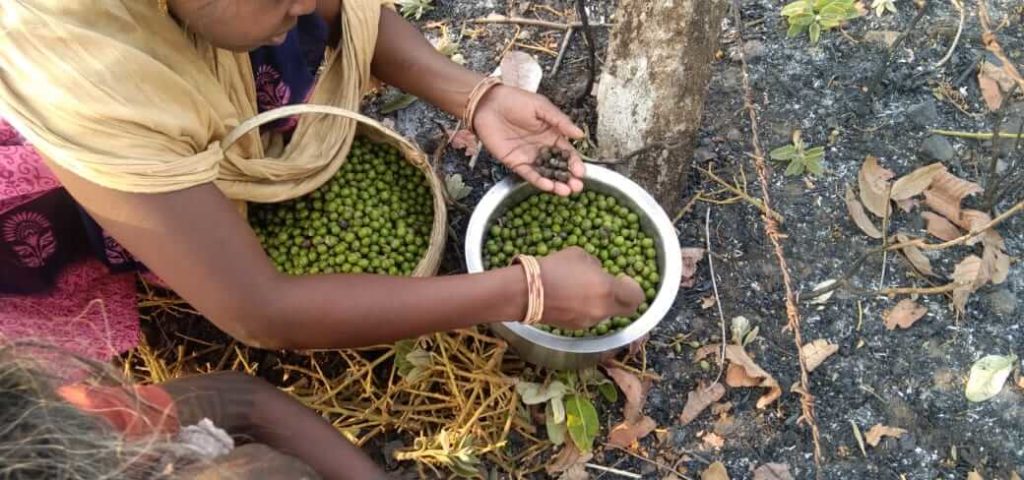
Non-destructive harvesting, processing and marketing of the NTFPs
NTFP (Non-Timber Forest Produces) provides essential safety nets to the tribal community, especially lean season. The skills of the community are built for sustainable and non-destructive harvesting of NTFPs, their processing and marketing through branding and promotion.
